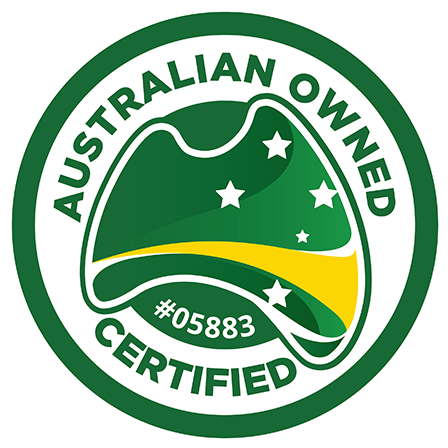Blogging stands out as one of the most potent SEO and online marketing tools available to businesses. The impact of consistently producing high-quality blogs is often underestimated. Consider these compelling statistics:
- Blogging attracts 55% more website visitors.
- It generates 97% more inbound links and 126% more leads.
- Blogs result in 434% more indexed pages in search engines.
Given these SEO and online marketing advantages, the proliferation of online blogs is no surprise. Producing valuable content regularly has become more crucial than ever. But how can bloggers churn out quality content quickly? This article aims to provide insights into effective strategies.
1. Set Clear Goals
Establishing clear goals is the foundation of a successful content strategy. Define the purpose and objectives of your content, ensuring alignment with your overall business goals. This initial step provides a guiding framework for your writing, helping you stay focused and avoid unnecessary tangents. It also aids in shaping your content to resonate effectively with your target audience.
Integrate a set of guidelines into your plan, including the type of customers you aim to attract, color schemes, tone of “voice,” and key content themes. This not only streamlines your writing process but also ensures a cohesive and branded content approach.
2. Know Your Audience
Understanding your audience is fundamental to crafting content that resonates. Tailor your content to meet the needs and interests of your target audience, making it more engaging and relevant. Conduct thorough audience research to identify their preferences, challenges, and expectations. This knowledge will inform the style, tone, and topics of your content.
Create buyer personas to represent your ideal customers. This detailed profiling helps you personalise your content, making it more compelling and directly addressing the pain points and interests of your audience.
3. Have a Plan
An excellent plan sets the stage for creating wonderful content. Develop a strategic plan encompassing budgeting, team needs, and time constraints. Integrate guidelines for your service to follow, covering aspects such as color schemes, tone of “voice,” and the type of content to be produced. This plan serves as a roadmap, providing a clear idea of the content to create.
Regularly revisit and update your plan to adapt to evolving market trends, audience preferences, and business goals. A dynamic plan ensures your content strategy remains effective over time.
4. Create an Outline
Organise your thoughts and structure your content with a well-organised outline. This roadmap streamlines the writing process, making it easier to flesh out the details. It ensures a coherent and logical flow in your content, preventing it from becoming disjointed or confusing for your audience.
Experiment with different outline structures, such as hierarchical or chronological, to find the format that suits your writing style and content type best.
5. Use Templates
Streamline your writing process by developing templates for different content types. Whether it’s blog posts, articles, or social media updates, templates save time and ensure consistency in your writing. Having a standardised format simplifies the creation of various content pieces.
Update your templates regularly to reflect evolving industry trends and shifts in content preferences. This ensures that your content stays fresh and relevant.
6. Eliminate Distractions
Create a distraction-free writing environment to enhance focus and productivity. Find a quiet and comfortable space, turn off notifications, and close unnecessary tabs. Minimising distractions allows you to immerse yourself fully in the writing process.
Experiment with ambient sounds or music to find what enhances your focus. Tools like white noise generators or instrumental playlists can create a conducive writing atmosphere.
7. Write First, Edit Later
Allow your ideas to flow without interruption during the initial writing phase. Resist the urge to edit as you go. Once the draft is complete, shift your focus to revising for clarity, coherence, and style. This two-step approach accelerates the writing process.
Set specific time blocks for writing and separate time for editing. This helps maintain a creative mindset during the initial writing phase and ensures a critical eye during the editing phase.
8. Batch Similar Tasks
Optimise your efficiency by grouping similar writing tasks together. Dedicate specific time slots to tackle related content pieces, such as writing multiple blog posts in one sitting. This focused approach enhances productivity and creativity.
Create themed content weeks or months, focusing on specific topics or campaigns. This allows you to delve deeply into a subject, establishing your authority and providing valuable insights to your audience.
9. Use Tools and Technology
Leverage writing tools and software to streamline the writing process. Tools like Grammarly, Hemingway Editor, and Google Docs enhance both your writing and editing capabilities. They catch errors, improve readability, and contribute to the overall quality of your content.
Explore new writing tools regularly to stay abreast of advancements in technology. Some tools offer features specifically designed for certain content types or industries.
10. Practice Freewriting
Set aside dedicated time for freewriting to generate ideas quickly without worrying about structure or grammar. This practice helps overcome writer’s block and stimulates creativity, leading to more innovative content. Freewriting serves as a valuable brainstorming tool.
Combine freewriting with mind mapping to visually organise ideas. This visual representation can uncover new connections and angles for your content.
11. Use a Calendar
Create a content calendar to schedule and organise your posts in advance. Stick to your schedule to ensure consistent posting. Take advantage of scheduling features on platforms to automate the process, allowing you to plan content strategically.
Include important dates, events, or industry milestones in your content calendar. Aligning your content with significant occasions adds relevance and timeliness to your strategy.
12. Don’t Reject Content Curation
Recognise the importance of content curation. Share or link to other brands and their articles to demonstrate your industry involvement and common goals. This practice not only keeps your content and business relevant but also showcases your commitment to collaboration within your field.
Add your perspective when curating content. Share your insights, experiences, or critiques alongside curated pieces to provide additional value to your audience.



 ABN: 58 196 482 040
ABN: 58 196 482 040